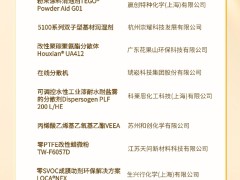據油價網2021年7月17日報道,由于油價繼續上漲,全球石油需求回升到新冠肺炎疫情大流行前的水平,人們可能會購買電動汽車(EV),以替代昂貴的燃料成本。 國際能源署(IEA)在一份報告中表示,油價上漲預計將鼓勵人們放棄傳統汽車,轉而使用電動汽車。 然而,這可能不利于全球經濟的復蘇。
今年7月,由于更高的需求和歐佩克+為提高石油基準價格而減產,油價達到每桶77美元,燃油價格不斷上漲的威脅令仍在克服Covid-19疫情經濟沖擊的消費者感到擔憂。
IEA在報告中說明了這種情況:“雖然油價處于這樣的水平可能會加快運輸部門電氣化的步伐,有助于加速能源轉型,但也可能拖累經濟復蘇,尤其是拖累新興國家和發展中國家的經濟復蘇。”
由于疫苗接種在全球范圍內的推廣速度加快,限制正在放松,夏季的公路和航空旅行也在增加,全球石油需求預計將在今年全年繼續增長,到2022年前達到新冠肺炎疫情大流行前的每天1億桶的水平。 事實上,在世界上的一些地區,如中國和印度,石油需求預計將超過大流行前的水平,這是因為整個區域的石油需求將在未來十年內繼續增加。
IEA警告歐佩克+,如果不減少減產以恢復各成員國的正常生產,以配合全球需求的增長,這可能會導致全球油價上漲并導致全球經濟不穩定。
然而,由于前一段時間阿聯酋和沙特阿拉伯在產量增加問題上存在爭議,歐佩克的增產速度低于預期。 歐佩克+目前預計8月份成員國原油產量將日增約40萬桶。
IEA的這份報告基于安永會計師事務所 6月份的AI分析,該分析指出,電動汽車的繁榮來得比預期早得多,到2033年前,電動汽車的銷量預計將超過傳統汽車。 特別是現在,作為清潔能源轉型的一部分,英國等幾個歐洲國家正計劃最早從2030年起禁止銷售汽油和柴油汽車。
隨著許多大公司支持電動汽車,亞馬遜、美國郵政署和聯合航空公司都宣布了新的電動汽車車隊,而福特、大眾和通用汽車(GM)增加了對電動汽車生產的投資,電動汽車數量和與電動汽車相關的股票將在今年夏天飆升。
此外,由于電動汽車的普及比預期的要快,更高的產量水平對其他行業產生了積極的連鎖效應,這意味著制造業所需的金屬開采業前景看好。
從長期來看,銅需求量預計將從2020年的30萬噸左右增加到2040年的400萬噸以上。 此外,到2040年,電池生產行業將占鎳需求量的60%。
由于對電動汽車生產至關重要的礦物的開采將增加,幾家公司將投資轉向國內,以滿足綠色政策預期。 例如,通用汽車本月宣布與熱控資源公司建立合作關系,從美國國內采購成本更低的鋰,用于其電動汽車電池。 他們希望使用美國產的鋰將增加就業機會,減少他們的碳足跡。
隨著電動汽車熱潮的臨近,不斷上漲的油價勢必加劇消費者需求的變化,消費者從汽油和柴油汽車轉向更便宜的電動汽車只是一個時間問題。 由于電動汽車市場的迅猛發展,其股票也將大幅上漲,對電動汽車零部件至關重要的礦產品價格也將上漲。
李峻 編譯自 油價網
原文如下:
High Oil Prices Could Fuel EV Adoption
As oil prices continue to rise and global demand is bouncing back to pre-pandemic levels, people could be buying into electric vehicles (EV) as an alternative to expensive fuel costs. The International Energy Agency (IEA) says that rising oil prices are expected to encourage people to shift away from traditional vehicles and increase the uptake of EVs. However, this could be detrimental to the recovery of the global economy.
With oil prices hitting $77 a barrel this July, due to higher demand and OPEC+ production cuts aimed at raising the benchmark price of oil, the threat of ever-increasing fuel prices is worrying for consumers who are still overcoming the economic hit of the pandemic.
The IEA stated of the situation, “While prices at these levels could increase the pace of electrification of the transport sector and help accelerate energy transitions, they could also put a drag on the economic recovery, particularly in emerging and developing countries.”
As the vaccination rollout is accelerating across the globe, restrictions are easing, and road and air travel are picking up over the summer months, global oil demand is expected to continue to rise throughout 2021, to hit pre-pandemic levels of 100 million bpd by 2022. In fact, in some areas of the world such as China and India, oil demand is expected to exceed pre-pandemic levels, as the oil need across the region will continue to rise over the next decade.
The IEA has warned OPEC+ that if it does not reduce cuts to resume normal production across member states, in line with the global demand increase, this could lead to economic instability due to rising fuel prices worldwide.
However, at present, production levels are being increased slower than expected by OPEC due to challenges in organizational talks, with disputes between the UAE and Saudi Arabia around production increase levels. OPEC+ is currently expected to increase production across member states by around 400,000 bpd in August.
This report builds upon the Ernst & Young AI analysis from June that stated the EV boom is coming much earlier than anticipated, with EV sales expected to surpass those of traditional vehicles by 2033. Particularly as several countries across Europe, such as the U.K., are planning a ban on the sale of petrol and diesel vehicles from as early as 2030 as part of the clean energy transition.
With many major companies backing EVs, with Amazon, the United States Postal Service, and United Airlines all announcing new EV fleets, while Ford, Volkswagen, and General Motors (GM) increase investments in EV production, electric vehicle and EV related stocks are set to soar this summer.
And thanks to the sooner than expected uptake of EVs, greater production levels have a positive knock-on effect on other sectors, meaning mining for metals required for manufacturing looks promising.
In the longer term, copper demand is expected to increase from around 300,000 t in 2020 to over 4 Mt in 2040. In addition, the battery production industry will account for 60 percent of nickel demand through 2040.
As mining for minerals vital for EV production is set to increase, several companies turn their investments inwards in an attempt to meet green policy expectations. For example, GM announced a partnership with Controlled Thermal Resources this month, to source lower-cost lithium from within the U.S. for use in its EV batteries. They hope the use of American lithium will increase job opportunities and reduce their carbon footprint.
With the EV boom looming and ever-increasing oil prices set to add to the shift in consumer demand, it is only a matter of time until customers move away from petrol and diesel vehicles to cheaper-to-run electric alternatives. And as the EV market soars so shall its stocks, as well as those of minerals vital for EV components.
免責聲明:本網轉載自其它媒體的文章,目的在于弘揚石化精神,傳遞更多石化信息,并不代表本網贊同其觀點和對其真實性負責,在此我們謹向原作者和原媒體致以敬意。如果您認為本站文章侵犯了您的版權,請與我們聯系,我們將第一時間刪除。







